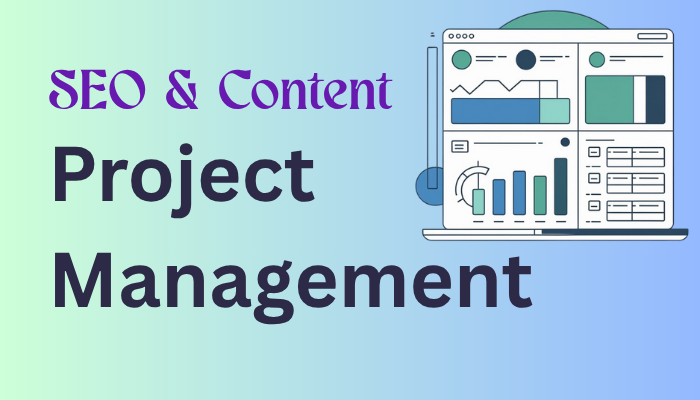SEO Strategy Ramp-Up: Your First 30, 60, and 90 Days in a New Role
When stepping in to a new SEO role, your first 90 days set the tone for everything that follows. This guide breaks down exactly what to focus on in your first 30, 60, and 90 days.

Whether you’re waking into your first SEO job, or you’re starting a new role in a new company, starting fresh can feel a bit daunting and can sometimes feel more like jumping onto a train that’s already barreling down the tracks. There’s pressure to keep things moving, fix what’s broken, and build what’s missing—sometimes all at once.
That’s why I’ve learned to lean on a clear 30-60-90 day plan. It’s not just a checklist; it’s how I keep my head above water, manage expectations, and show everyone I’m not just here to tinker with title tags. I’m here to think bigger and move the needle.
Whether I’m joining an in-house team or stepping into agency life, those first three months always come down to three things: figuring out what’s working (and what’s not), spotting early opportunities, and building a foundation for long-term growth.
I’ve noticed the plan shifts depending on where I land. Agency SEOs, for example, get pushed to show quick results across multiple clients, while in-house SEOs like me sometimes have to fight for buy-in but get more room to pull long-term levers.
Here’s how I break down those first 90 days—what I audit, where I act, and how I earn trust while laying the groundwork for real SEO impact.
The First 30 Days: Discovery, Trust, and Quick Wins
Your first month in a new SEO role is your orientation. At this stage, don’t worry about proving you know every ranking factor or diving headfirst into deliverables. Focus on learning the terrain, asking the right questions, and figuring out what actually matters to the business (or client).
This is your discovery phase. The work you do here sets the tone for everything that follows. Skip this, and you risk spending month three cleaning up mistakes from month one.
Here’s how to make your first 30 days count:
1. Meet the People Behind the Website
SEO doesn’t happen in isolation—so your first priority is meeting the humans who touch the site, own the metrics, or block the changes. In-house, this might mean syncing with marketing leads, product managers, and whoever owns the dev queue. At an agency, you’ll likely be introduced to a client-side marketing manager or founder who’s juggling a dozen other fires. Either way, ask what success looks like. Ask what they’re nervous about. Ask what SEO win would make their lives easier in the next 60 days.
Sometimes you’ll learn about a migration no one mentioned. Or that the team hates updating the CMS. Or that the last SEO person disappeared mid-project. These are the things that won't show up in a crawl report but will absolutely shape your strategy.Here are some examples of who to schedule meetings with ASAP
- Marketing leads who set traffic goals
- Content creators who need SEO support without losing their voice
- Product managers or engineers who own the CMS or dev queue
- Sales or RevOps teams who care about what actually converts
If you're in-house, these are your long-term collaborators. If you're at an agency, they might be gatekeepers or subject-matter experts. Either way: ask what they think is or isn’t working. The insights you get here often reveal more than a crawl ever could.
2. Audit Everything—But Prioritize Ruthlessly
You’ll want to run a full SEO audit, but don’t try to fix every error on day one. Instead, split your audit into these key areas.The smartest audits in the first month are focused and intentional. What’s broken that needs urgent attention? Where are the obvious missed opportunities? What’s ranking well without support—and could easily be pushed higher?
Instead of dumping a spreadsheet of 172 broken links, you might point out that a few of the company’s top-converting pages are accidentally canonicalized to a staging domain. That kind of thing builds instant trust—and momentum.Finding quick wins and easy fixes at this stage helps earn trust and buy-in needed for later stages.Here are some areas to focus on, but this is not an exhaustive list. You’re triaging. Look for low-effort, high-impact issues—things like:
- Important mobile optimization issues
- Pages accidentally noindexed
- Obvious keyword cannibalization
- A blog post ranking on page 2 for a valuable term with a terrible title tag
3. Understand Performance (and Its Politics)
The data is one thing. The interpretation of that data is another. You need to be able to tell a story with your data. You also need to answer why things like rankings are dropping or content needs to be published at a faster rate, as well as be prepared with a how and your plan to fix.
Also remember,its one thing to know what’s in Google Analytics or Search Console. It’s another to understand how that data is interpreted inside the company.
Some teams live and die by organic traffic. Others only care about demo bookings or affiliate clicks. You might notice a drop in traffic that no one internally is worried about—because conversions are steady. Or vice versa.
This is your moment to ask: What does leadership care about? What’s the KPI no one talks about but everyone feels pressure around? What counts as a “win” here?
This is especially critical for agency SEOs. Your timeline to prove value is shorter, and your access might be limited. So if demo signups are the north star, don’t waste time trying to increase branded search impressions. Focus where it counts.
Look at:
- Traffic patterns by channel, device, and geography
- Which pages drive conversions—not just traffic
- What’s historically been called a “win” or a “loss”
Then ask questions like:
- “What metrics matter most to leadership?”
- “Have there been any past SEO projects that failed or stalled?”
- “What’s one thing you wish SEO had solved already?”
If you're in-house, this helps you align with internal narratives and avoid repeat mistakes. If you're at an agency, it helps you calibrate your reporting to what the client actually values.
4. Define the SEO “Now” and Tease the “Next”
Your last priority for this phase is setting the tone for where SEO is going. You don’t need a roadmap just yet (soon though) but you do need a clear snapshot of where things stand. By the end of your first month, you should be able to hand over a short but clear picture of what’s going on:
- What’s working
- What’s hurting performance
- Where the biggest opportunities lie
You don’t need a full roadmap yet. But you do need a direction—and a few fast wins to back it up. That might mean cleaning up indexing issues, fixing duplicate metadata on top pages, or tweaking internal linking to get a few key URLs crawled better.
Deliverables here might include:
- A short summary of site health and quick wins
- 2–3 prioritized fixes or tests
- A working draft of your SEO goals (informed by data + conversations)
This shows that you’re not just pointing out problems, you’re moving toward solutions. Always be solution oriented in your findings and recommendations.
Agency vs. In-House: Key Differences at This Stage
At agencies, the pressure to show early value is intense. Clients want to see results fast, even if the real impact of SEO takes months. That means deliverables need to be sharp, scoped, and outcome-driven from day one.
In-house, you usually have a little more room to dig deeper. You’re not just there to fix what’s broken - you’re helping shape the long-term strategy. But that also means you’ll need buy-in across multiple teams, which takes patience and political savvy.
TL;DR: Your Mission for Month One
- Build trust with people before tweaking pages
- Audit with intention, not overwhelm
- Translate data into actionable insights
- Deliver early wins that set the stage for bigger moves
Days 31–60: From Insight to Movement
By the time you hit your second month, the expectations shift. You’re no longer just getting familiar with the team and company, you’re expected to move and start owning the SEO program. The trust you’ve built, the audits you’ve run, the questions you’ve asked - all of that should now start to take shape as action.
Don’t panic and think you need to start overhauling everything to show value. Start with choosing the right levers, proving you can prioritize, and getting at least one meaningful win across the line. The people around you are paying attention to what you do now - not just what you’ve found.
Build a Strategy You Can Explain in One Breath
Your roadmap doesn’t have to be fully flushed out in these beginning months. But by month 2 you do need a point of view.
What’s the shape of the problem? Where’s the opportunity? What are you recommending, and why?
Your job right now is to shift from listing issues to telling a story. Not everything is urgent. Not everything is worth fixing. And if you try to do it all, you’ll end up chasing your own tail.
Instead, start grouping what you’ve found into themes. Maybe it’s crawl depth and poor internal linking. Maybe it’s content that never stood a chance of ranking. Maybe it’s a bunch of high-value pages with garbage title tags.
Whatever it is, define your short list - and be ready to explain how fixing those things will get the business closer to its goals.
That usually looks like:
- A short list of focus areas (ex: crawlability, internal linking, stale content)
- A working hypothesis of what’s holding performance back
- A first pass at how to fix it—phased, if needed
Don’t overpromise. Don’t overcomplicate. Just make it clear you’ve got a plan.
Get a Win out the Door
There’s a moment in every new role where people stop caring about what you’ve inherited and start watching what you’ll deliver. This is that moment.
So don’t try to fix everything right now. Just fix something that matters.
Maybe that’s refreshing a high-potential blog post that’s stuck on page two. Or rewriting key title tags and meta descriptions for your top commercial pages. Or finally getting Google to crawl a collection of orphaned URLs that should’ve been indexed months ago.
It’s less about the size of the win and more about momentum. You’re showing that you can turn insight into movement. That you know how to ship something useful without getting caught in the weeds.
Even if no one says it out loud, this is where confidence in your work starts to solidify - or fall apart.
That might mean:
- Refreshing a blog post that’s hovering at the top of page two
- Fixing indexation issues that are blocking key landing pages
- Cleaning up internal linking so your most valuable pages aren’t buried
It doesn’t have to be flashy. It just has to be done - and tied to something that matters. This is where you show you can execute, not just audit. Once you have completed it be sure to share it, be loud, and share your results. Visibility is particularly important with SEO.
Start Building the Long Game (Even If It’s Messy)
Behind the scenes, you should be sketching a longer-term roadmap.
This doesn’t have to be a full-blown strategy doc polished for delivery, but you want enough shape to start communicating where SEO is headed. Think about the foundational things that need to be addressed. Understand what themes are emerging. Look at where there are quick wins, and what needs more time or resourcing.
The best roadmaps at this stage don’t promise too much, they show direction. They help your team (or your client) understand what to expect, when, and why it matters and start thinking about resourcing needs ahead of time.
If you’re in-house, this roadmap gives other teams something to plan around. If you’re at an agency, it anchors the relationship and helps prevent you from being seen as “just the SEO person.”
What does the next 3, 6, or 12 months of SEO work actually look like here? What needs more resourcing? What can run on autopilot once set up?
The early version will be messy. That’s fine. But having it gives you a way to:
- Spot dependencies early (especially dev or content needs)
- Set realistic expectations with stakeholders
- Avoid constantly reacting to small fires
Set Up One System That Saves You Later
This is also a great time to build a repeatable system that will make your life easier going forward. Now, systems addicts like me may start getting a little sidetracked here. Don’t automate everything. Don’t set up five systems, a trello board, a notion template and a custom AI. Just focus on one thing right now that will save you the most amount of time.
It might be a simple reporting dashboard that tracks visibility for your top-priority pages. It might be a content brief template to streamline SEO recommendations for writers. It might be a dev ticket workflow to help you track what’s been implemented.
Here are some additional ideas on what that might be:
- A rank tracking dashboard for high-priority URLs
- A quick workflow for requesting SEO tweaks from content or dev
- A simple doc to log recurring issues or wins
Small systems now mean less chaos later. Especially when things pick up.
If You’re In-House vs. At an Agency
This phase can look very different depending on where you sit.
In-house, you’re likely working more cross-functionally - aligning with product, content, dev, and leadership to turn your roadmap into real work. You probably have deeper access to systems, but it might take longer to get things through the pipeline. Your wins will be bigger, but slower.
At an agency, speed matters more. Clients want to see that something has happened. You’re proving value quickly, sometimes with limited access or control. This is where your communication and clarity become just as important as the fixes you’re recommending. You’re managing expectations and execution.
Month Two Is Where It Starts to Count
The second month is about narrowing in. You’re still learning, but now you’re leading. People are watching to see if you’re spinning your wheels or actually building traction.
This is when you show them you’re not here to stay busy. You’re here to make things move.
Days 61–90: Cementing Strategy and Owning the Next Chapter
By the third month, your “I’m still new” card is all but expired. You’ve asked the questions. You’ve run the audits. You’ve launched a few early wins. Now, the focus shifts from identifying problems to leading the path forward.
This is where you go from reactive to strategic. You’ve done the listening. You’ve found the issues. You’ve shipped the first fixes. Now, it’s about putting your strategy into motion - and prove you can lead it.
Don’t fall in to the trap of busy work and doing more for the sake of it. It’s about focus, follow-through, and turning what you’ve learned into a repeatable, scalable plan.
Now it’s time to deliver on the roadmap
At this point, you’ve likely got a messy doc somewhere with dozens of ideas, notes, and to-dos. Now’s the time to turn it into something others can follow.
You want to create something people can rally behind. Something that says: here’s the plan, here’s what it’ll take, and here’s what we’re measuring.
This is where you stop being the person who “does SEO” and start becoming the person driving SEO strategy.
A solid roadmap at this stage should cover:
- The top 2–3 focus areas for the next quarter (e.g., technical debt, content expansion, internal linking)
- Key milestones or phases - what’s coming in what order
- Dependencies or blockers that need support from other teams
- The impact you expect each initiative to drive (or how it ties to business goals)
This roadmap should be about showing that you have a method - and that it’s not random. The roadmap doesn’t need to be fancy. It just needs to be clear.
Secure Buy-In and Get Others Moving With You
Even the best roadmap means nothing if no one’s on board. So this is your moment to start socializing your plan - and looping others in.
You’ll likely need:
- Content or marketing teams to support creation or updates
- Devs to unblock site improvements or fix structural issues
- Leadership to support priorities and see SEO as worth the effort
You don’t need everyone all at once. But you do need a few key people to say “yes” - and enough momentum to avoid getting stuck in silos or bottlenecks. Make it easy for others to help you. Be specific. Be realistic. And above all: connect your asks to shared goals.
The third month is where things often stall - not because the SEO is wrong, but because it lives in a vacuum. You need allies. People who will build with you, unblock you, or at least not ignore your Slack messages.
Start by sharing your roadmap in small conversations, especially with people whose work is critical to implementation. Content marketers. Dev leads. Product owners. Show how your work supports theirs.
Make your asks specific and actionable:
- “Here’s a list of five pages I’d love to refresh with your team this month. I can provide the briefs.”
- “I noticed the product pages aren’t getting crawled. Can I work with you to open up the nav or submit a dev ticket?”
- “We’re seeing strong impressions for this topic, but the page isn’t converting. Can we run an A/B on the CTA?”
SEO gets implemented through collaboration - not pressure. Speak their language. Make it easy to say yes.
Launch a Bigger Initiative
You’ve done the early tweaks. You’ve shipped small wins. Now it’s time to show you can lead something more ambitious.
That might be:
- A content hub built around a key commercial topic
- A structured campaign to build backlinks or digital PR
- A sprint to refresh 20+ stale blog posts at once
- A dev initiative to improve internal linking at scale
This doesn’t need to be flashy. But it should be significant. You’re showing that you’re not just reactive - you can steer a full project from insight to execution.
And once it’s live, make sure people know. This is where visibility builds credibility.
This doesn’t have to be enormous, but it should be substantial enough to show that you’re thinking long-term and operating at a higher level.
That might mean:
- Leading a cross-functional project to clean up and consolidate outdated content
- Launching a net-new content series around a core commercial theme
- Kicking off a backlink strategy (digital PR, outreach, partnerships)
- Rolling out structured data or improving product listings for rich results
- Managing an internal linking sprint across hundreds of pages
Whatever the project, make sure it has a clear beginning, middle, and end—and that it’s connected to the larger roadmap you’ve laid out. The execution matters, but so does the narrative. Be able to tell the story of why this work was prioritized and what you’re aiming to achieve.
Refine Reporting to Highlight Impact
With more work in motion, you need reporting that tells a clear story. That means moving past “organic sessions” and into metrics that matter - especially to the people who sign off on budgets and timelines.
You’re not expected to double traffic by day 90. But you are expected to show what’s changing, and why that matters.
Start highlighting:
- Visibility gains for key pages or topics
- Click-through rate improvements after meta updates
- Technical improvements and their impact on crawl/indexation
- Conversions or leads influenced by organic traffic
- Any meaningful SEO contribution to business goals (especially revenue or acquisition)
Even if results are still early, show the steps in motion. Frame your work as iterative and strategic, not just busy.
If you’re in-house, this builds credibility with leadership and helps protect SEO from being deprioritized.
If you’re at an agency, this is how you retain clients - by proving your work is working, even before the numbers explode.
In-House vs. Agency at This Stage
In-house, this is where long-term strategy gets real. You’re not just presenting plans, you’re defending resources, partnering across teams, and embedding SEO into product and content decisions. Wins here are often slower, but the foundations run deep.
At an agency, this is where retention hinges. You’ve likely completed your first full reporting cycle. The question now becomes: are they confident in keeping you? That confidence doesn’t just come from results - it comes from clarity, proactivity, and proof you’re steering the ship.
Wrapping Up: The Role Starts Now
If the first 90 days are about earning trust, the next phase is about using it.
This is where you stop being “the new SEO” and start becoming the one who owns how search fits into the broader picture - where it influences product decisions, drives revenue, fills pipeline, or supports the long game of brand authority.
What comes next depends on the foundation you’ve laid:
- Do you have the buy-in to run larger initiatives?
- Are you surfacing the right metrics to stay visible?
- Have you made yourself essential, not just available?
This is the point where SEO either becomes integrated—or ignored again. Not because of the quality of your ideas, but because of how you communicate them, rally support, and move them through friction.
Above all, make your work impossible to miss.




